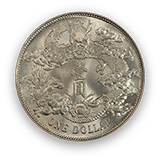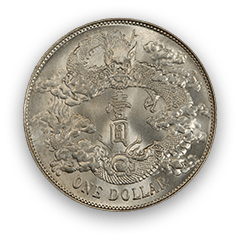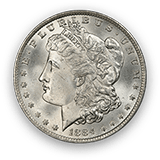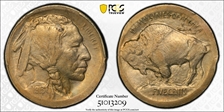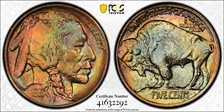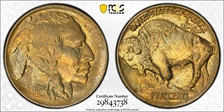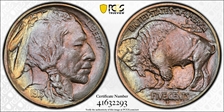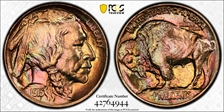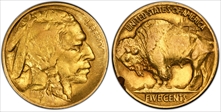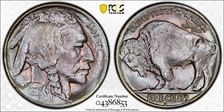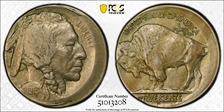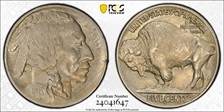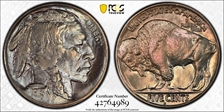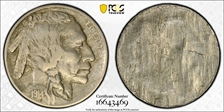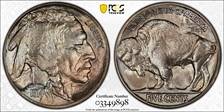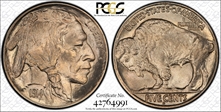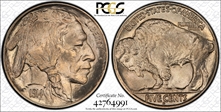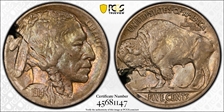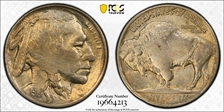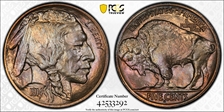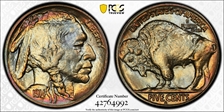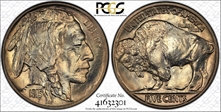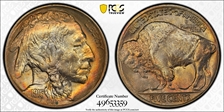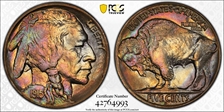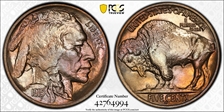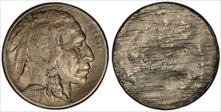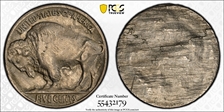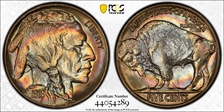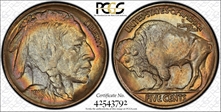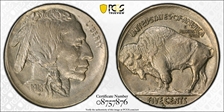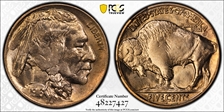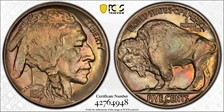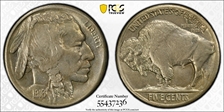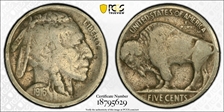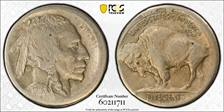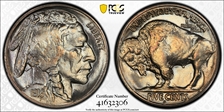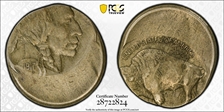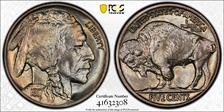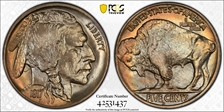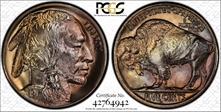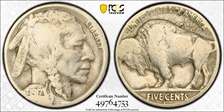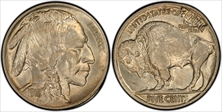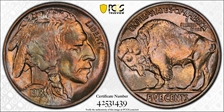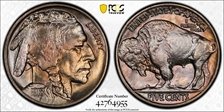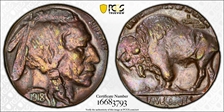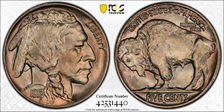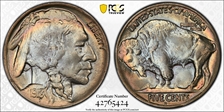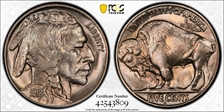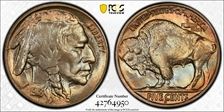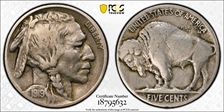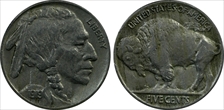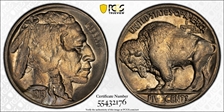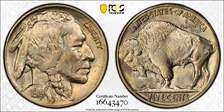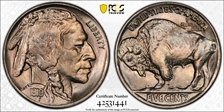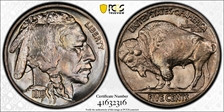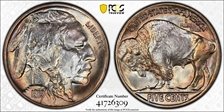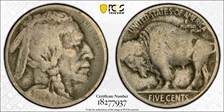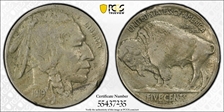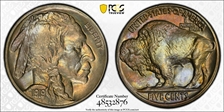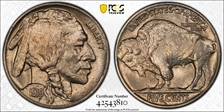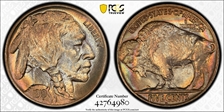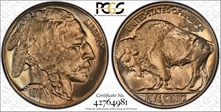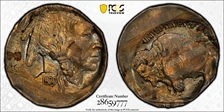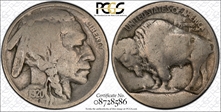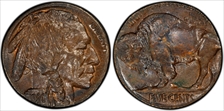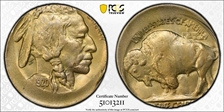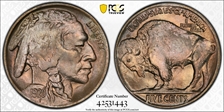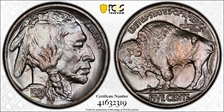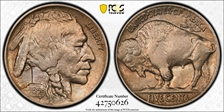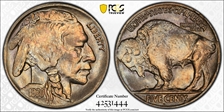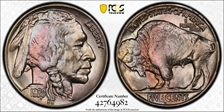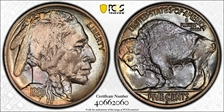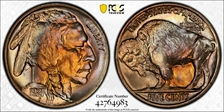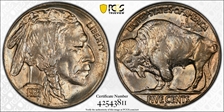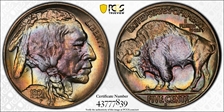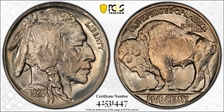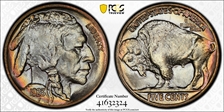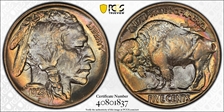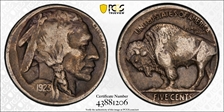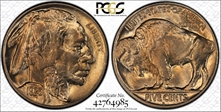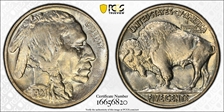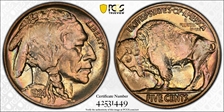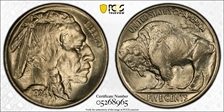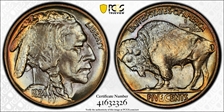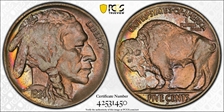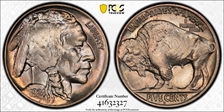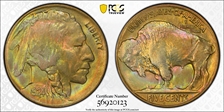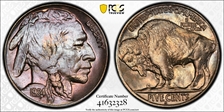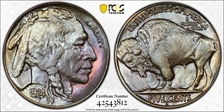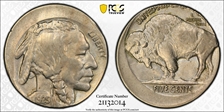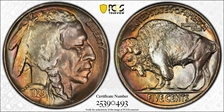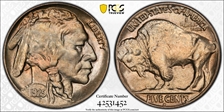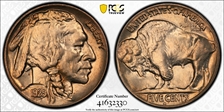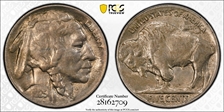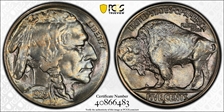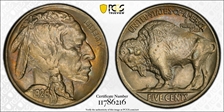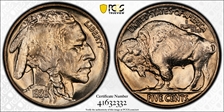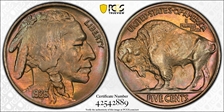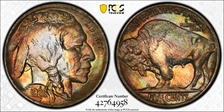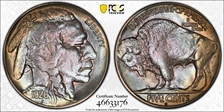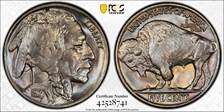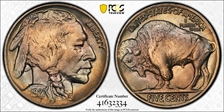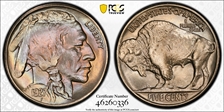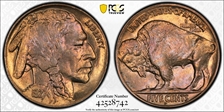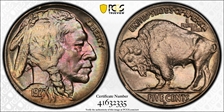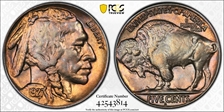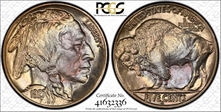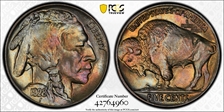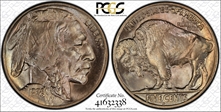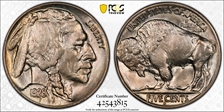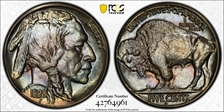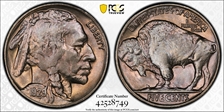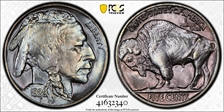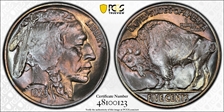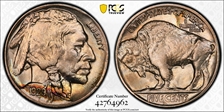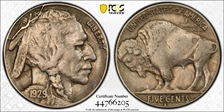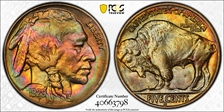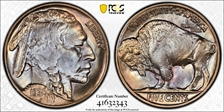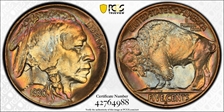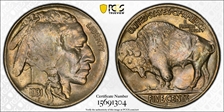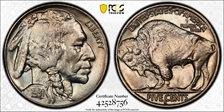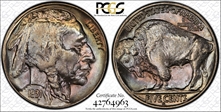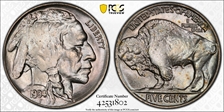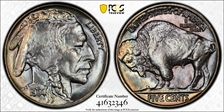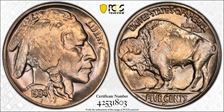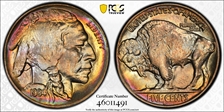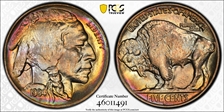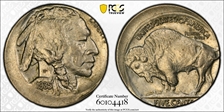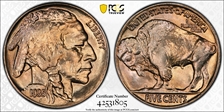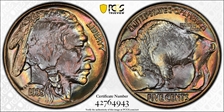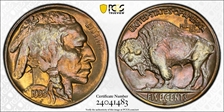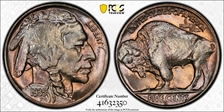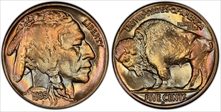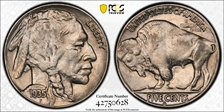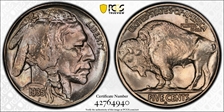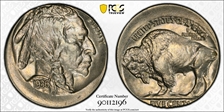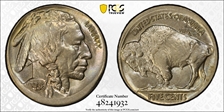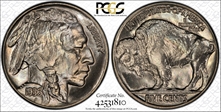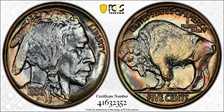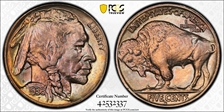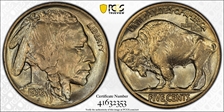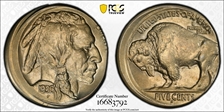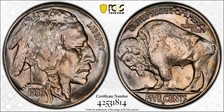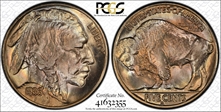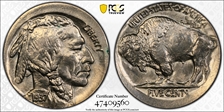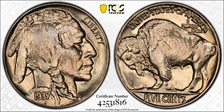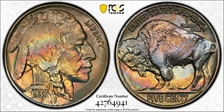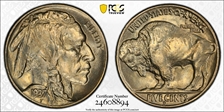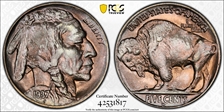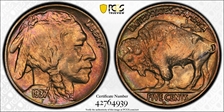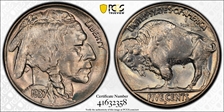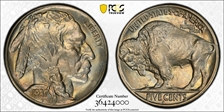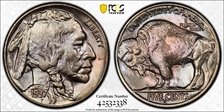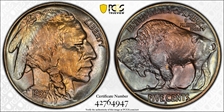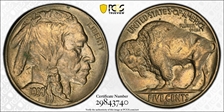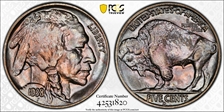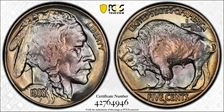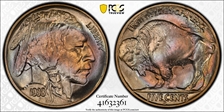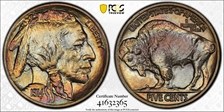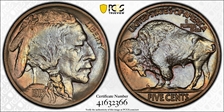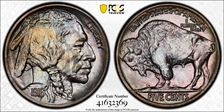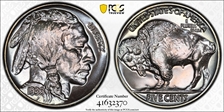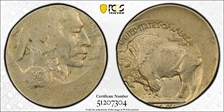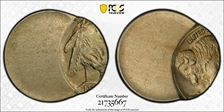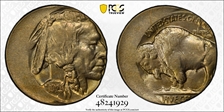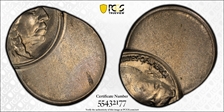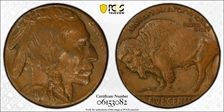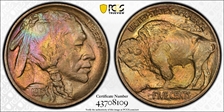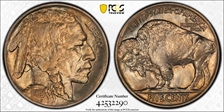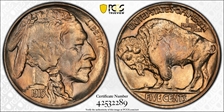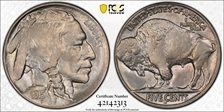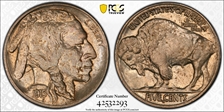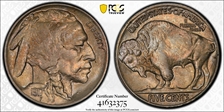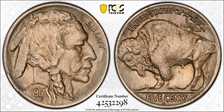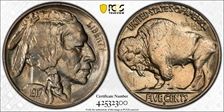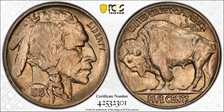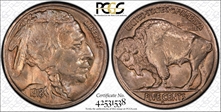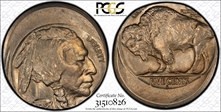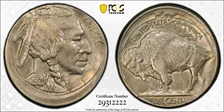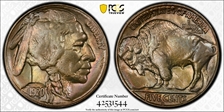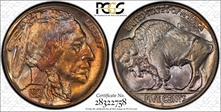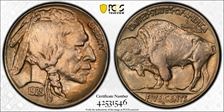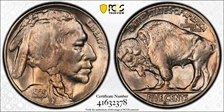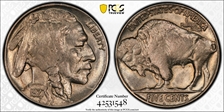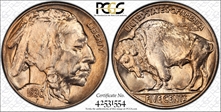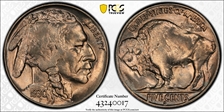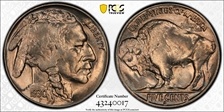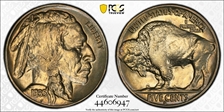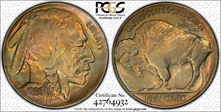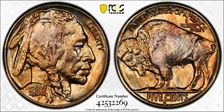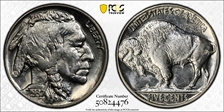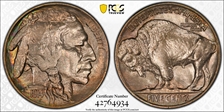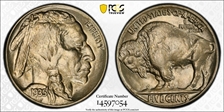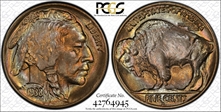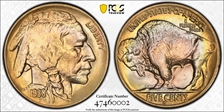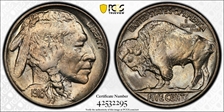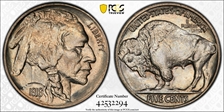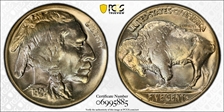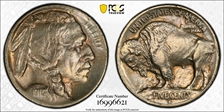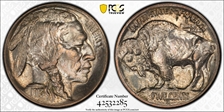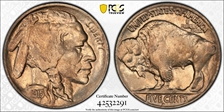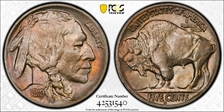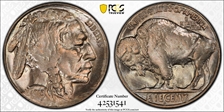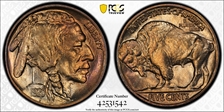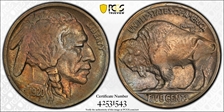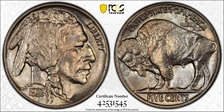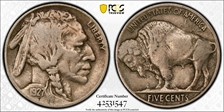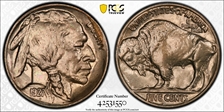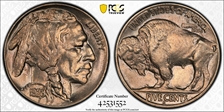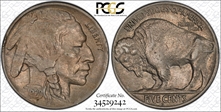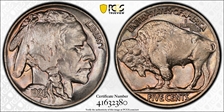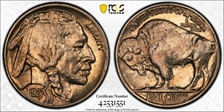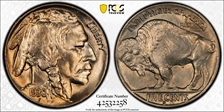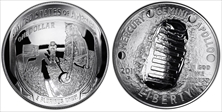lunagately 的钱币相册
PCGS attributed as a Minor Variety Error, RPM D/D. This is a example of the Minor Variety RPM with the D
This is the unique Gold Buffalo Nickel struck on a $5 Gold planchet. This Buffalo Nickel remained unknown for over 100 years and just surfaced in 2019. It is considered one of the Top, if not the Top Error discoveries in the last 50 years.
My First Defective Planchet Error. This is a very nice example of this type of error, fairly dramatic and certainly bold enough to count. The void goes completely through the coin.
This is the Obverse Half of a 1916 Buffalo Nickel that has split in half. It is a Mated Pair, with the Reverse being the next coin in this Showcase. This is Mated Pair #1 and having both the Obverse and Reverse is Extremely rare.
Here is the Reverse half of the 1916 Buffalo Nickel Mated Pair #2. Although a Mated Pair, I guess it is now a separate coin and has been treated as such. This Split Planchet is not only rare, but since it is a Mated pair, that is the Obverse and Reverse are here, it is extremely rare and I am proud to have it in my Error Collection.
This is the Famous 1916 Double Die Obverse Error Coin, a Major Variety. It is the top of the Population, tied with 2 other coins in MS 64. It is also the PCGS Plate Coin.
This 1916 D Buffalo Nickel has a small reverse CUD die break at about 11:00.
A very nice example of an Obverse Retained Die CUD which starts about 6:00 and goes to 6:30. This coin has been cleaned otherwise it would grade MS.
PCGS attributed as a Minor Variety No F. Or is this the fake "skinny" Buffalo Nickel? The Reverse of this 1916 S looks like the Reverse of my 1917 S Obverse Die CUD nickel shown below in this error showcase set. I'll let you decide but in any case, I fell It still belongs in my Unusual and Unique Buffalo Nickels: All Error, Die Variety Error and Unique Buffalo Nickel Set. Counterfeits can be of interest also!
Struck 40% Off Center. Seriously Off Center With No Mint Mark Showing. This Coin Could may have been Minted at Philadelphia, Denver or San Francisco.
A Nice Obverse CUD Die Break. The Date Looks Like It Is Resting On A Platform.
This 1918/7 D Buffalo Nickel is a very bold overdate. There is no question and it is a Major Buffalo Nickel Variety. It is tied for finest known.
PCGS attributed as a Minor Variety 2 Feather. Due to the fact that it also has the designer's initial makes it a Minor Variety 2 Feather. However, the 3rd feather was abraded with such enthusiasm that it extended well into the Indians neck.
A very nice near MS example of a Reverse Strike Through. It can be seen in the "FIVE" whereas the mound has been struck as well as the entire E and half of the V in FIVE.
It is impossiable to see in the picture but this coin is in the process of splitting in half due to a "Clamshell Planchet" error. About half the Planchet has split leaving a slice ,so to speak, in the coin.
One seriously messed up 1920 Buffalo Nickel. Struck 25% Off Center with rim damage most likely occurring in the minting process. (However we will never know)
A Spectacular Reverse Die Break Making This 1920 Type 2 Buffalo Nickel look like a Type 1.
A Good example of a 10% Off Center Buffalo Nickel with the Obverse Shift to the North/North East.
From the Fred Weinberg Collection, a 1929 S Buffalo Nickel with a Fantastic Retained Cud Die Break.
A Very Nice Mint State 25% Off-Center Strike, 1917 Buffalo Nickel. Again, No Mint Mark. This is the type of Buffalo Nickel error that I love!
A Really Fantastic Partial/No Date Buffalo Nickel with only the 19 showing and a partial third digit top. Mint State Condition. A perfect example of a Mint State, "No Date", Buffalo Nickel.
A wonderful piece. A 1929 Buffalo Nickel with an unknown mintmark in MS 64, struck to the East about 25%. Very Nice Example! There is a possibility that this coin was minted in Denver as I think I can see the top of the D. (But I cannot be totally sure)
Here is a No Date Buffalo Nickel in MS 65! It is struck 65% Off Center and a nice way to start off my showcase. Great Die Clash on this one otherwise known as "Chin Whiskers"
1917 Buffalo Nickel Struck on a Cent Planchet. Stunning MS64BN Off Metal Mint Error.
This is a regular Buffalo Nickel Variety we call a 3 1/.2 leg Variety. Known as an Abraded Die Variety, the right front leg of the Bison was abraded / polished nearly off by mint employees trying to eliminate clash marks on the dies. The clash marks occurred when two dies came together without a planchet between them. The mint employees were trying to save the dies for continued use.
This 1915 Buffalo Nickel is a Double Die Obverse, FS-101. It is a Class IV Offset Hub Doubling. It is considered relativity rare and is a regular Variety. The most pronounced area of doubling can be seen at the nose/nostril, eyelid and lip.
This 1915 D/D Buffalo Nickel in a Regular Variety RPM and displays the Repunched Mint Mark in dramatic fashion. It is very impressive.
Here is a nice example of a 1917 D Buffalo Nickel, 2 Feather Variety. The obverse die was polished to eliminate a die clash and also eliminated the smallest or third feather. On this example, the third feather is 95% eliminated and it is considered a 2 Feather Variety. This is a Regular Variety.
Struck 20% off center to the South. Also a Two Feather Variety.
Error coin, broadstruck and a variety, 2f. Very unique coin and a top pop variety!
This 1936 D Buffalo Nickel is the only 3 1/2 leg Buffalo Nickel that is considered a Major Variety. Similar to the 1937 D Buffalo 3 Legger, but not as drastic, mint employees abraded and polished off a good portion of the right front leg most likely to remove a die clash. This allowed the mint to continue using the dies.
This is the First Buffalo Nickel to get the "Proof Like" (PL) Designation from PCGS.
The 1914/3 Buffalo Nickel is the first Overdate in the series. Without a doubt, it is difficult to see and not nearly pronounced as the 1918/7 D Overdate that appeared a few years later. The validity of this Overdate has been disputed over the years but here it is and it is considered a Major Buffalo Nickel variety!
Here is a 1916 Buffalo Nickel missing the Designers' initial "F". It is another Abraded Die Variety called the "No F". Although there are a number of No F's, the 1916 No F is considered a Regular Variety, while most of the others are Minor Variety.
PCGS attributed as a Minor Variety 2 Feather Error. It is actually a 2 Feather No F Variety Error.
Extremely Rare Regular RPM With Only 2 Known As Of This Writing! D South of D. Thanks Brian and Kurt.
Apollo 11 50TH Anniversary, FDI, AMF, Launch Ceremony Fred Haise Signed, Apollo 13
